Are you in the market for a meat slicer? There are many variables to consider when purchasing one of these tools, which can be overwhelming. Whether you’re buying a commercial or home-use meat slicer, it is important that you make an informed decision. Fortunately, there are simple guidelines and tips to keep in mind on how to choose a meat slicer so that you can pick the perfect slicer for your needs.
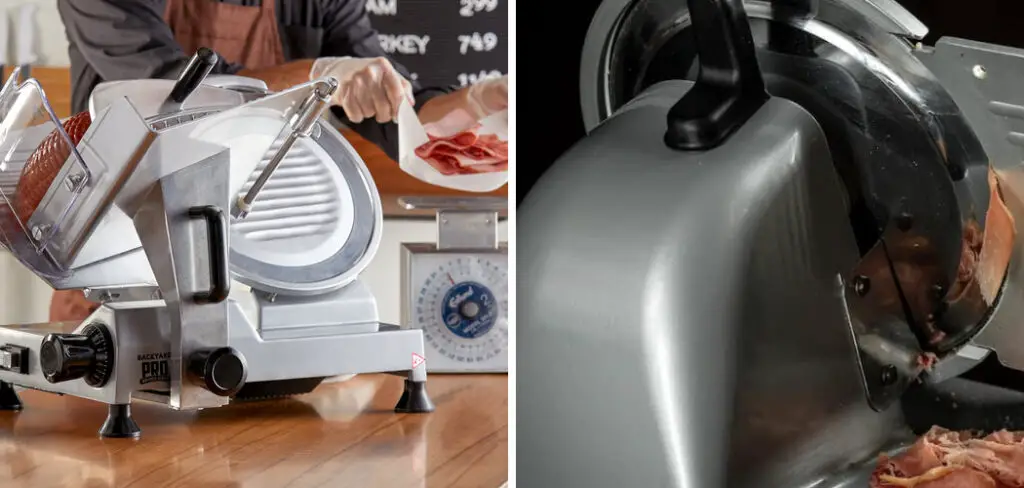
By considering factors such as cost, maintenance requirements, convenience features and performance capabilities before choosing a model, you can ensure maximum satisfaction from your purchase! Keep reading this blog post to learn more about how to choose the best meat slicer for your kitchen.
The Importance of a Meat Slicer
A meat slicer is a must-have kitchen tool for any home cook or professional chef. Not only does it make slicing large cuts of meat much easier, but it also ensures the slices are even and consistent in size. This makes it great for creating charcuterie boards, sliced steaks, jerky, and more. Plus, with the right cutting blade, most meat slicers can also be used to slice hard cheese, vegetables, and even nuts. With so many uses, having a reliable, sharp meat slicer is an invaluable tool in any kitchen.
However, with so many models on the market it can be difficult to know which one is right for your needs. By understanding the different types of slicers available and considering important factors like blade size and motor power you can make sure you get a machine that will last and provide consistently high-quality results time after time.
The good news is that once you’ve found the perfect slicer for your kitchen there are some simple maintenance steps that you can follow to keep it running optimally over time. Cleaning the blade and lubricating the moving parts after each use will help to ensure it continues to work as expected for many years.
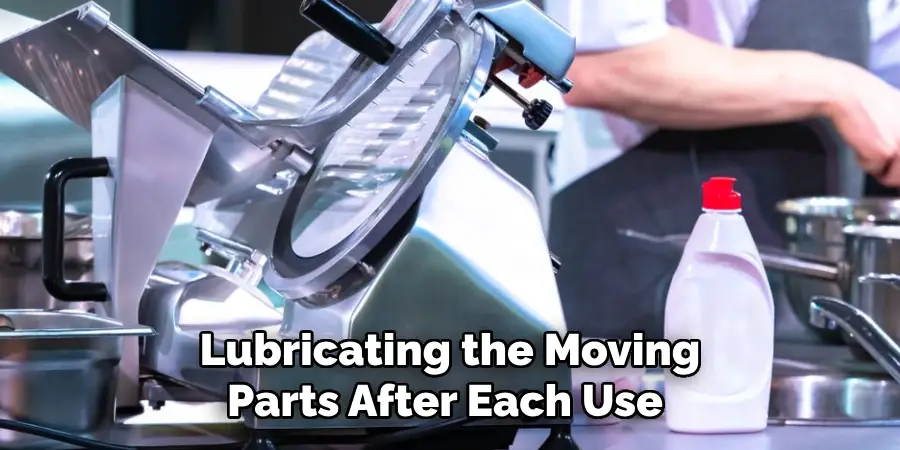
Making sure you have a quality meat slicer in your kitchen is an important part of keeping a well-stocked and efficient cooking area. With the right tool, you can reduce prep time and create precise, even slices every time. Consider all your options before purchasing so that you get the best slicer for your needs. Then take good care of it with regular maintenance to keep it running like new for years to come.
Advantages of Using a Meat Slicer at Home
Using a meat slicer at home can offer many advantages. Here are some of the most common:
1. Consistent Slices –
Many people enjoy having uniform, consistent slices when they cook with meat. With a quality slicer, you can quickly and easily get perfectly even slices every time, eliminating any guesswork or uneven cuts that can come from using a knife.
2. Flexible Cutting Thickness –
For those who prefer thin slices for their meals, a slicer allows you to adjust the thickness of your cut according to your preference. This feature is especially useful for making jerky or dried meats which require specific thicknesses for cooking properly.
3. Time Saving –
If you’re always preparing meals for your family, you know that slicing meat can be a time-consuming process. With a slicer, you can whip through large quantities of meat much faster and with far less effort than cutting it manually. This is especially beneficial for larger cuts or tougher meats which require more force to cut.
4. Versatility –
Many slicers are designed with multiple functions, allowing you to use them for different types of food preparation tasks beyond just slicing meat. Examples include making thin vegetable slices for salads, shredding cheese, grinding nuts and even thinly slicing breads and other baked goods.
5. Safety –
Using a manual knife when cutting raw meats can pose a risk due to the risk of slipping and hurting yourself. A slicer offers a much safer alternative, as it eliminates the need to use a knife altogether.
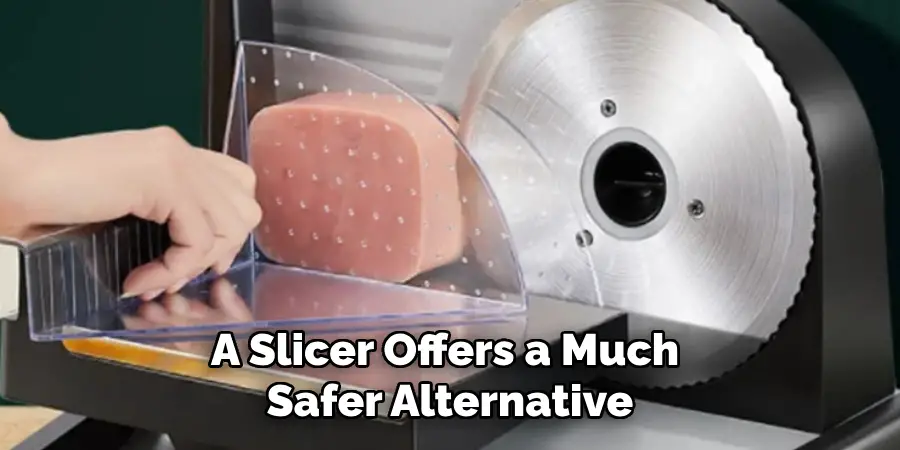
With all these advantages, it’s easy to see why a meat slicer can be a great addition to any kitchen. Whether you’re an experienced chef or a novice cook, having one will make your life much easier when it comes time to prepare meals!
10 Ways How to Choose a Meat Slicer
Type of Meat Slicer:
There are two main types of meat slicers: manual and electric. Manual slicers are operated by hand, making them suitable for low-volume usage or small kitchens. Electric slicers, on the other hand, are powered by electricity, providing faster and more efficient slicing capabilities.
Consider your usage requirements and volume of slicing before selecting the type of meat slicer that best suits your needs. Although manual slicers are generally cheaper than electric models, they lack the power and speed that electric slicers offer.
Blade Size and Material:
The blade size is an important consideration as it determines the thickness and size of the slices. Meat slicers typically offer blade sizes ranging from 8 to 14 inches. Smaller blades are ideal for slicing smaller portions, while larger blades are suitable for slicing larger cuts of meat. Additionally, consider the material of the blade.
Stainless steel blades are durable, corrosion-resistant, and easy to clean, making them a popular choice for meat slicers. They also retain sharpness longer than other materials, such as carbon steel. Keep in mind that the material of the blade will affect its durability and performance in the long run.
Motor Power:
For electric meat slicers, the motor power determines the slicing speed and capability. Higher motor power allows for smoother and quicker slicing of tougher meats and larger quantities. Consider the motor power that aligns with your intended usage, ensuring that the slicer can handle your slicing needs efficiently without strain.
This is particularly important for frequent slicing and larger batches. To give you an idea of what to look for, a slicer with motor power between 0.3-0.5 horsepower should be sufficient for home use; whereas slicers with motor power between 0.5-1.0 horsepower are better suited for commercial use, as they can handle larger batches and tougher meats.
Adjustable Thickness:
The ability to adjust the thickness of the slices is a crucial feature in a meat slicer. Look for a slicer that offers a wide range of thickness options, allowing you to achieve the desired thickness for different cuts of meat or cheeses.
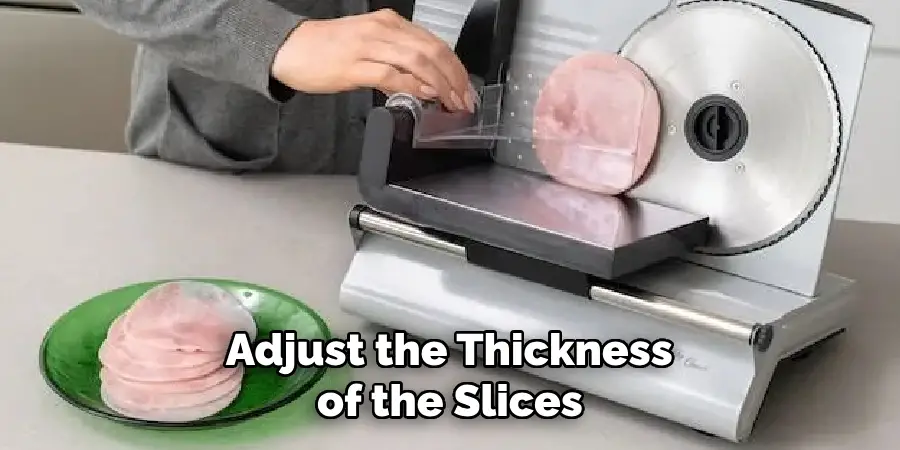
Some models offer precise thickness control through a numerical dial or lever, ensuring consistent results. If you need different thicknesses for various foods, look for models that offer a range of settings. Additionally, some slicers come with thin and thick slicing blades to offer additional flexibility.
Safety Features:
Safety should be a top priority when selecting a meat slicer. Look for models that include safety features such as a blade guard, a safety lock, and a non-slip base. These features help prevent accidents and ensure secure operation while using the slicer. Some slicers also come with a finger guard attachment that can be used to keep your hands away from the blade. Additionally, make sure you read and follow all of the manufacturer’s instructions before using your slicer.
Ease of Cleaning:
A meat slicer should be easy to clean to maintain proper hygiene. Look for slicers with removable components, such as the blade, food carriage, and food pusher, which can be easily disassembled and cleaned separately. Dishwasher-safe parts are an added convenience. Additionally, consider models with smooth surfaces and minimal crevices to prevent food debris buildup.

A stainless steel body is also preferable for easy cleaning.
Some models come with built-in sanitizing features, such as a removable sharpening stone, which helps keep the cutting blade sharp and clean. Other accessories, such as a cleaning brush or squeegee, may also be included to ensure easy cleaning. Finally, be sure to check the manufacturer’s recommendations for proper maintenance and care of your slicer.
Durability and Construction:
Investing in a durable meat slicer ensures long-term reliability and performance. Look for slicers constructed with high-quality materials, such as stainless steel or heavy-duty plastic. Check customer reviews and ratings to gauge the durability and overall construction of the slicer before making your decision.
Size and Portability:
Consider the size and portability of the meat slicer, especially if you have limited countertop space or if you need to transport the slicer. Compact and lightweight models are ideal for small kitchens or if you frequently need to move the slicer. However, ensure that the size does not compromise the slicing capacity or stability of the machine.
Noise Level:
Some meat slicers can be noisy during operation, which can be disruptive in a home or commercial setting. Look for slicers that are designed with noise-reduction features, such as sound-dampening materials or quiet motors. This ensures a more pleasant slicing experience without unnecessary noise. Additionally, some slicers are designed with a safety feature that automatically turns off the motor if it detects loud noises. This helps protect operators from injury due to potential malfunctions.
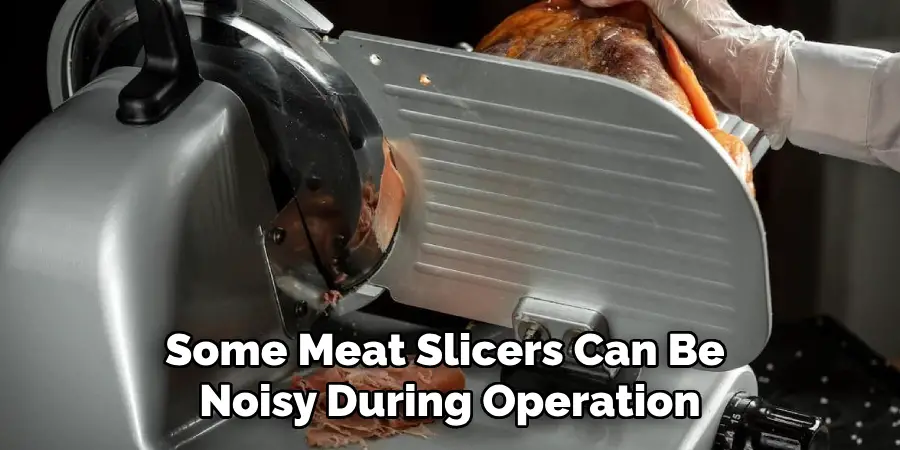
Brand Reputation and Warranty:
Consider the reputation of the brand and the warranty offered for the meat slicer. Reputable brands often provide better customer support, reliable performance, and longer warranty periods. A warranty provides peace of mind and protection against potential defects or malfunctions.
It’s important to read the fine print, however, as there may be limitations or exclusions in the coverage. Ask questions and research reviews of the brand and model to make sure that the product you purchase is reliable. Additionally, look into the return policy of the vendor or store in case of any issues.
Some Common Mistakes When Choosing Meat Slicer
1. Not Researching the Different Slicers Available.
Different types of meat slicers are designed for different types of meat, and it is important to find one that will meet your specific needs. Researching the different types of slicers available and their features can help you to make an informed decision about which one is best for your needs.
2. Not Considering Your Budget.
It is important to make sure that the meat slicer you choose fits into your budget, as some models are much more expensive than others. Purchasing a model that is too expensive could put a strain on your finances, so it is important to do research and figure out what you need and how much you can afford to spend before making a purchase.
3. Not Reading Reviews or Talking with Other Home Chefs.
Before making a purchase, make sure to read reviews from other users who have purchased the slicer you are considering. Other home chefs can also offer valuable advice on which model is best for your needs.
4. Not Taking into Consideration the Size and Weight of the Slicer.
The size and weight of a slicer should be taken into consideration when making a purchase, as some models may not fit well in certain kitchens or be too large to easily move around. Additionally, if the slicer is too heavy it can make it difficult to clean and store after use.
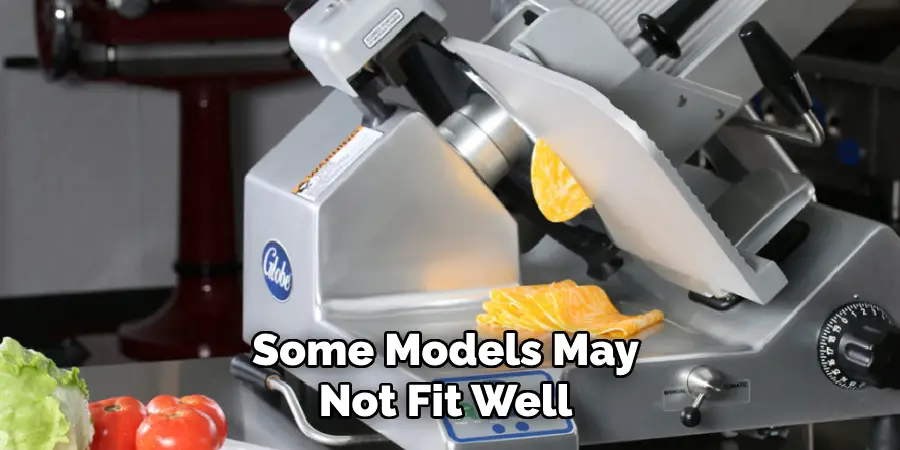
5. Not Checking for Additional Features or Accessories Included with the Slicer.
Many meat slicers come equipped with additional features or accessories that could make them even more useful than their basic design alone allows for. Checking to see what additional features or accessories come with the slicer can help you determine if it is worth the cost.
With a bit of research and knowledge, choosing the right meat slicer for your needs will be easy. Be sure to consider all factors before making a purchase so that you get the best model for your needs at an affordable price.
Conclusion
Ultimately, choosing a meat slicer is a serious investment that requires careful consideration of all the factors presented here. Think about what types of food you will be using it for, how often you will be using it, and determine the size and type of features necessary to support your needs. With this knowledge in hand, take some time to explore different models, read online consumer reviews from people who already own them, and make sure to focus on high-quality products – the better the quality, the longer you can expect it to last.
That way, when you make an investment in a meat slicer you can rest assured that your purchase will serve you well for years to come. Ultimately, finding the perfect slicer is worth taking the time and effort. Now that you know How to Choose a Meat Slicer, happy shopping!
Professional Focus
Angela Ervin, a former interior designer turned blogger, specializes in kitchen design and renovations. Through her website, she blends her passion for cooking with design expertise, sharing practical and creative ideas. Known for balancing functionality and beauty, Angela’s insightful content has made her a trusted voice in home design and lifestyle.
About the Author
Angela Ervin, an experienced interior designer and blogger, combines her passion for kitchen renovations with storytelling. Living in Petersburg with her family, she enjoys cooking and testing her projects firsthand. Known for her humor and relatable style, Angela shares creative, functional design insights through her content, making her a trusted voice in home design.
Education History
University: Virginia Commonwealth University
Degree: Bachelor of Fine Arts (BFA) in Interior Design
- Angela’s education at VCU focused on mastering core interior design principles, including spatial planning, color theory, materials selection, and sustainable design practices.
- She gained hands-on experience through studio projects and collaborative design exercises, which honed her ability to create functional and aesthetically pleasing environments.
- Her coursework also emphasized problem-solving and practical applications of design, preparing her for real-world projects like her self-directed kitchen renovations.
- The program’s strong foundation in both technical skills and creative expression shaped Angela’s ability to seamlessly integrate form and function in her work.


